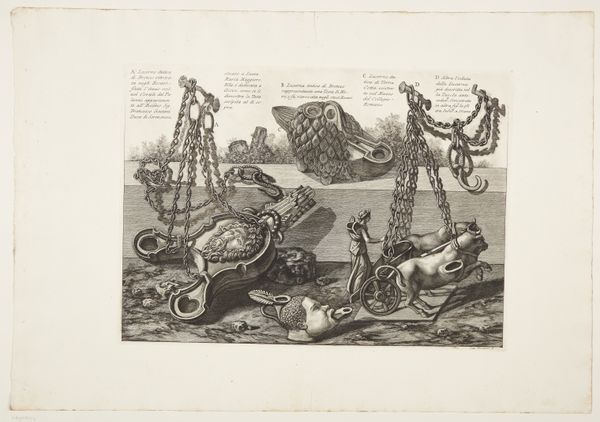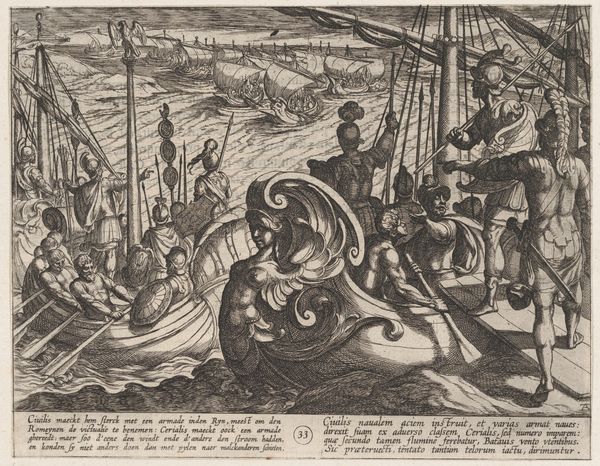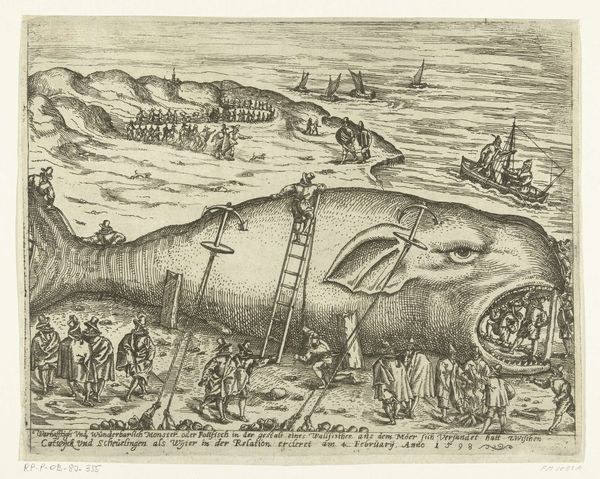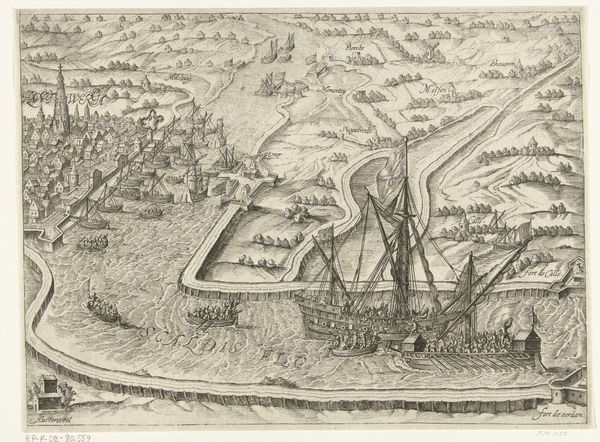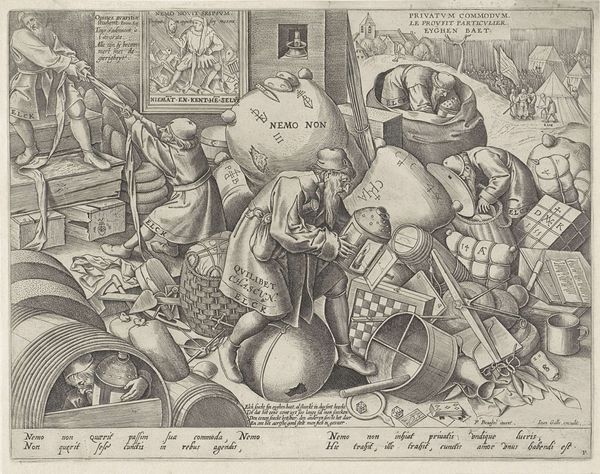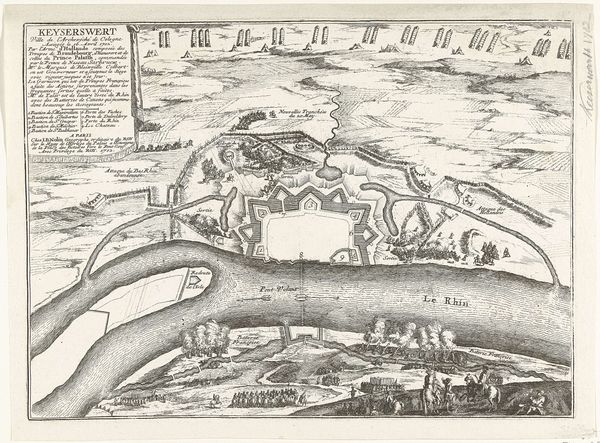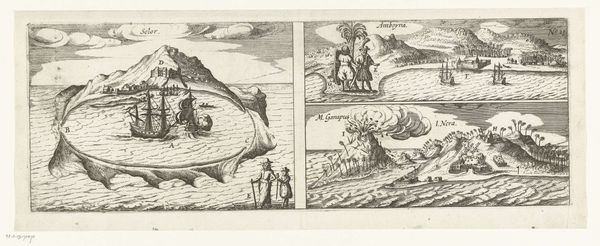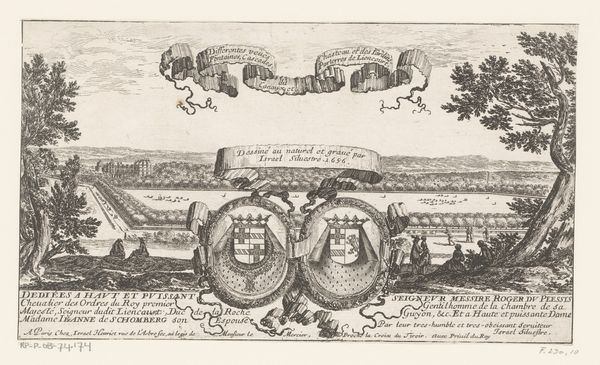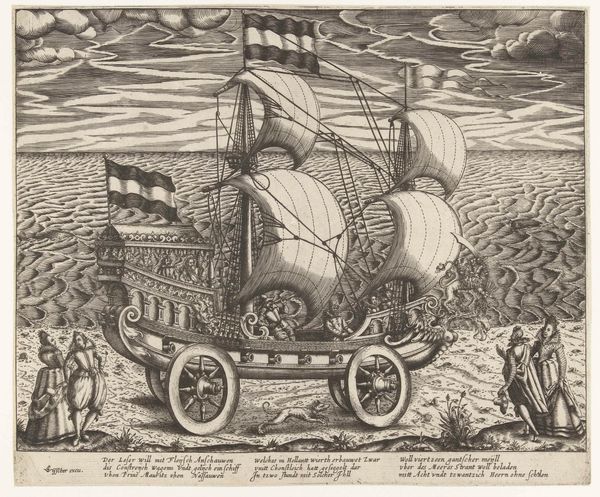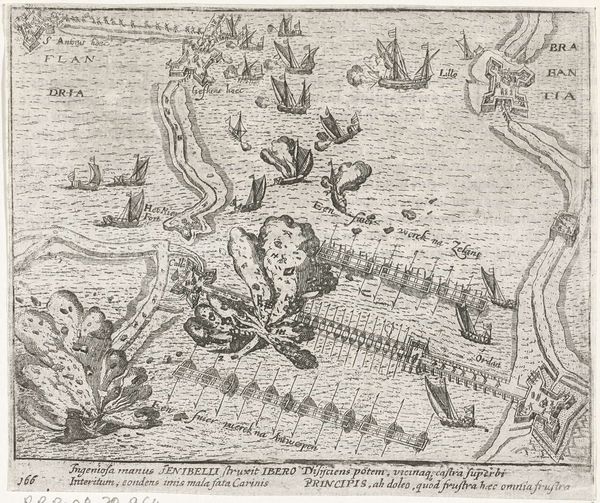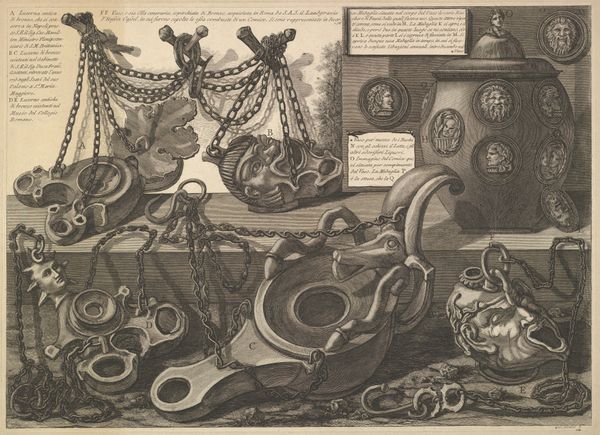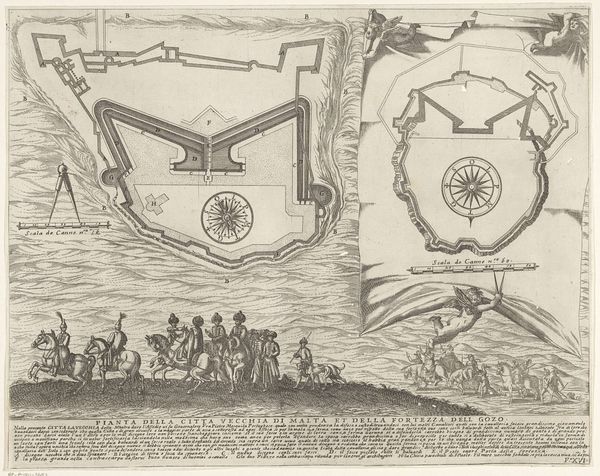
Demonstration panel showing technique for raising travertine and marble blocks for the construction of the tomb of Cecilia Metella, Rome, from the series 'Le Antichità Romane' 1756
0:00
0:00
drawing, print, etching, engraving, architecture
#
drawing
#
medieval
# print
#
etching
#
romanesque
#
engraving
#
architecture
Dimensions: Sheet: 20 1/2 x 28 3/8 in. (52 x 72 cm) Plate: 18 5/16 x 20 3/8 in. (46.5 x 51.7 cm)
Copyright: Public Domain
Curator: We're looking at Giovanni Battista Piranesi's etching and engraving from 1756, "Demonstration panel showing technique for raising travertine and marble blocks for the construction of the tomb of Cecilia Metella, Rome, from the series 'Le Antichità Romane'". Editor: It’s like a construction manual, but strangely beautiful! There’s a kind of heroic energy here. All those ropes, and the promise of tremendous weight. It's oddly...theatrical, in a dark way. Curator: Indeed. Piranesi here is concerned with the how, the mechanics. It’s about labor, ingenuity. You can almost feel the strain on the ropes, and by extension, on the human hands involved. His process meticulously documents and showcases the logistics behind ancient Roman construction. Editor: I suppose the technique, the tooling—that’s his raw material. The etching emphasizes all those textural details, really grounding it. It gives the piece an…authentic, grimy quality that’s absent in many idealized renderings of antiquity. Curator: Precisely. The lines, created through etching and engraving, create depth and detail demonstrating the process from raw quarrying to completed structure. What this illustrates, ultimately, is a system of resource extraction and management, embedded within its social context. Editor: And I can't help but feel this subtle melancholy permeating it. It's almost a lament, a meditation on how even the most monumental of endeavors are destined, ultimately, to become ruins. Seeing those blocks gives you an unsettling hint of oblivion, you know? It speaks of grandeur and demise intertwined. Curator: An interesting point! Perhaps Piranesi also directs the viewer’s attention to these overlooked structural means, re-framing their appreciation of art and production. He is making commentary about monumentality not just in artistic endeavor, but material accumulation. Editor: And that’s quite powerful, really, isn’t it? From functional illustration to grand visual drama that holds past and future both! Curator: Absolutely. Piranesi turns our attention to the hidden efforts and social dimensions inherent in monumental works, urging us to re-evaluate our perceptions of how things come to exist and pass away.
Comments
No comments
Be the first to comment and join the conversation on the ultimate creative platform.
